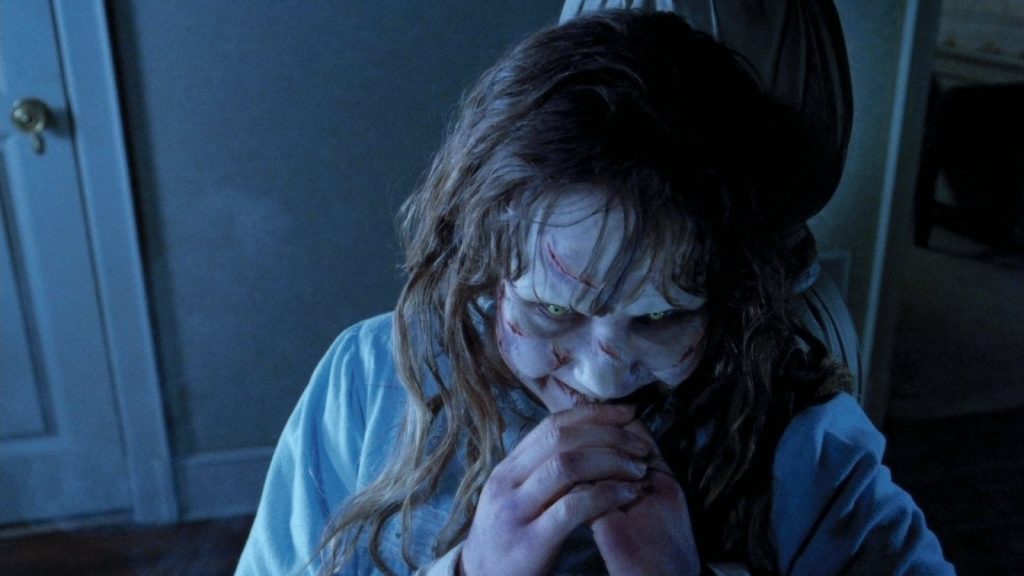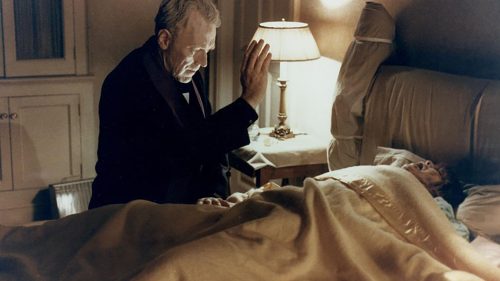
“And let my cry come unto thee.” This is the reply to the exoteric formulae uttered by Father Merrin (Max von Sydow) on Regan (Linda Blair). At least twice, Father Karras (Jason Muller), whose faith is wavering, hesitates in the enunciation. “And let my cry come unto thee.”
Friedkin’s masterpiece is all there: is this God coming? Or are we looking at nothing but hell? The harbingers of Dantesque inferno are visible on Earth: at the subway station, in the bad neighbourhood Karras’ mother lives in, in the nursing home she ends up. Also, in the angst of Father Karras, who subconsciously guilts himself for abandoning her (at one point, the demon possessing Regan will hurt Karras by assuming the physical features of his dead mother). The goal of the devil is to convince us that God won’t love us, comment the two priests recovering from the exorcism, in one of the reintegrated scenes.
The 2000 re-release of The Exorcist reintegrates a few scenes cut from the 1973 editing. The film, already gorgeous, is improved, even. All in all, as far as William Peter Blatty (who authored the novel and wrote the film’s screenplay) and William Friedkin were fighting on which scenes to include, Blatty was right.

The realism of possession (the preternatural phenomena, the vomiting, the obscenities) is the most evident aspect but not the heart of The Exorcist: it is not a horror film but a film about pain. Before bursting into Regan’s body, hell is already in human suffer...
We know that Blatty and Friedkin didn’t think of The Exorcist as a horror film. We might say that it is not a film of horror, but a film of pain. The pain of abandonment is an essential theme in The Exorcist: the excruciating scene of Karras visiting the nursing home… old women crowd around him not because, as some said, he is a priest, but because they are abandoned mothers, or never-mothers maybe, who see in him the replacement of the son that isn’t there.
If Karras’ mother feels abandoned by her own child, the young Regan feels abandoned by her father. Throughout the film, a subtle correlation exists between the two figures. The Exorcist is ripe with references, allusions, anticipations, mutuality, opposition, exchange. All of this is typical, although severely underacknowledged, of Friedkin, who is a giant of American cinema.
As far as the sound mix goes, you’ll allow me a small digression. All sound engineering in this movie is nothing short of masterful. It is daring, and it is refined. The easiest example to mention is the silence. Usually, silence is the absence of sound, but in The Exorcist, silence sequences, built with special filters, are bubble of absolute, gunky blobs of nothingness. They weigh so heavily on the images, and are one of the highest examples of the shocking effect of a sound – usually a doorbell or telephone ring – coming right after silence.